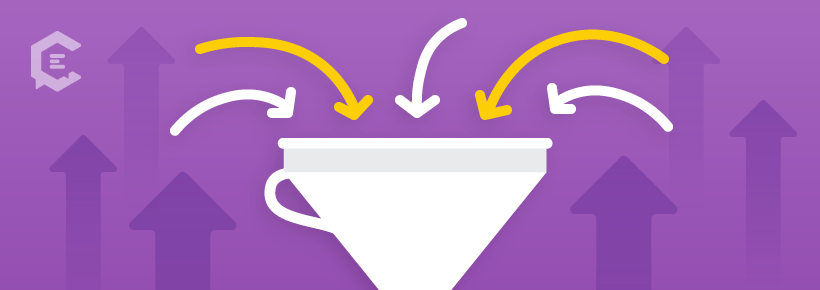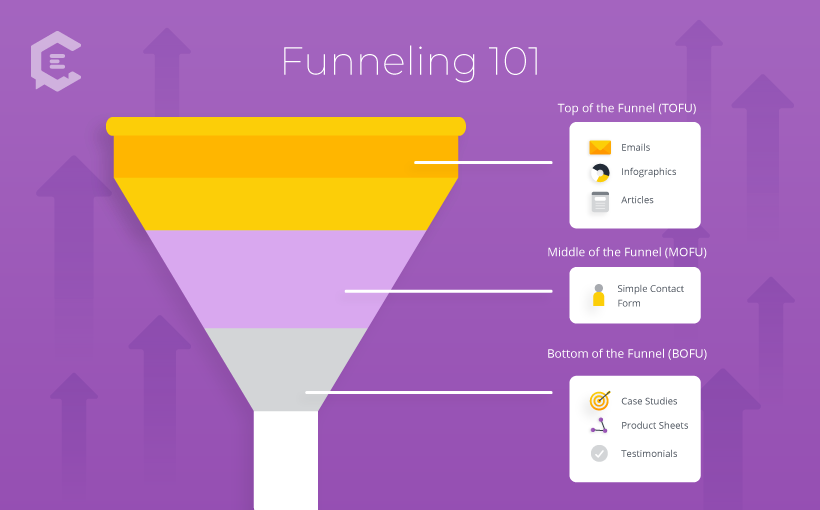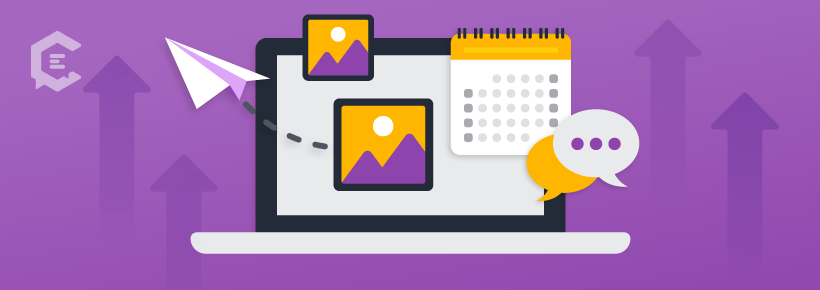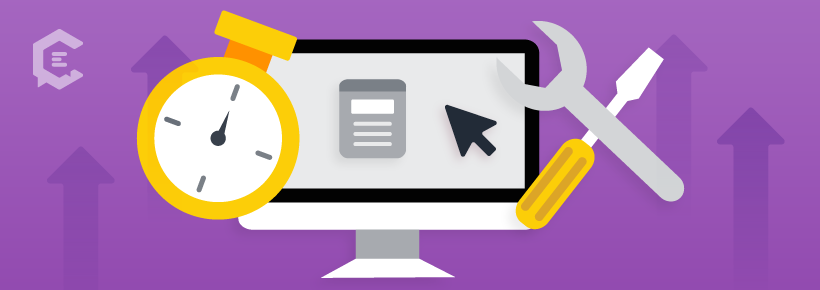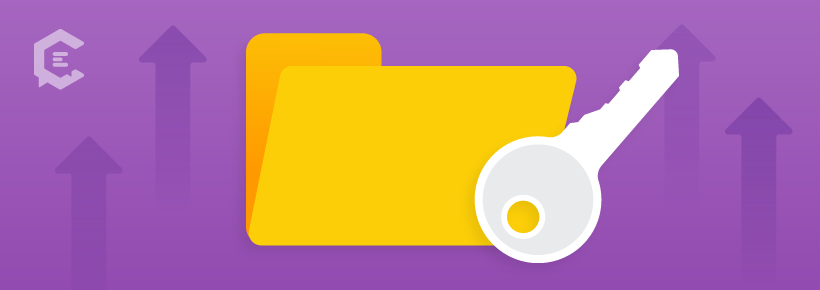We automate so many things in our life — online grocery shopping, scheduling a monthly cleaning lady, monthly credit card auto payments and so much more — why not do it on a professional platform?
Marketing automation and the ability to affordably test your messaging have reinvented the marketing funnel as we know it. But without a foundational understanding of it, marketing automation is useless.
With 48 percent of marketers using automation, it is one of the four most popular methods to create personalized customer experiences, according to House of Marketing “Yearly Marketing Survey 2019.”
Automation should set out to do two things:
- Capture leads: This would be through a web form on your site that allows visitors to register and automatically receive whatever you promised them (typically a white paper).
- Nurture leads: A series of follow-up emails that are sent to your new lead that provides them with additional value and offers so that when they take action, you can further segment them based upon those actions. The goal of the segmenting is to ensure that future communications are as relevant as possible.
Read on to learn how great content can power your funnel, how to get the most out of the content you create and to understand how content fuels your marketing automation funnel. Once mastered, you’ll capture more leads, improve conversion rates, create repeat customers and enhance the purchasing experience.
If you build it, they will come
Marketing automation enables businesses to reach more people in a cost-effective, competitive way. It also allows businesses with fewer resources to set up automated campaigns, nurture sequences and repeat tasks to move prospects through the marketing funnel.
It’s a “set it and forget it” approach — it lets you set your marketing on autopilot. It’s proven effective, too. More than 90 percent of the most successful users agree that marketing automation is “very important” to the overall success of their marketing across channels.
Funnel 101
The marketing funnel represents the consumer’s journey through the purchasing process, from prospect to customer — and repeat customer.
Why is an optimized funnel so important to your success? Properly set-up funnels guide consumers, regardless of where they are in the funnel, to become a customer.
This variety enables businesses to touch on as many issues as possible that may capture a potential buyer’s interest in a solution.
Here are the funnel types:
TOFU: The top of the funnel
People at the top of the funnel are looking for solutions to a particular problem. They are looking for information, not calls to action to buy.
TOFU presents the opportunity to capture the consumer’s attention and educate them about solutions to the problem they are trying to solve. It’s also where you can begin developing an awareness of your brand, expertise and thought leadership.
What makes good TOFU content? An email, infographic, blog, article or some other form of relevant and useful information that would appeal to those seeking more information about your product or service “category.” Lists and how-tos can be great TOFU content.
The goal: Regardless of what you’re filling the top of your funnel with, the goal is to have keyword-rich content that appears once prospects begin scouring the internet looking for answers.
MOFU: The middle funnel
This is where marketing rubber meets the road. This part of the funnel represents where prospects turn into Marketing Qualified Leads (MQLs). Here, you present your company or product as the best solution. Prospects are now warm leads that specifically want more information on the solutions and products you have to offer.
What makes good MOFU content? MOFU is where you capture contact information, once a person raises their hand to subscribe. Then you send additional content such as a newsletter, ebook or white paper. You can also invite MQLs to sign up for webinars, consultations and free demos. MOFU is also where you can begin making offers like discounts and free trials.
How to capture MQLs: Using a simple contact form that captures their name and email, or you can drive leads to a landing page where you can get even more detailed information.
Doing this enables you to create nurture campaigns that provide more information or offers that will continue to move them through your funnel.
The goal: To move MQLs down the funnel to becoming Sales Qualified Leads (SQLs).
BOFU: Bottom of the funnel
This area represents where leads become Sales Qualified Leads (SQLs). SQLs are hot leads that are just a decision away from becoming customers.
What makes good BOFU content? BOFU content should convey that the best solution is to buy from you. It includes case studies, product sheets and more testimonials.
The goal: Turning SLQs into buyers and evangelists.
Ageless & evergreen content: Every stage of the funnel
At every stage of the funnel, you should create evergreen content.
Relevant and timeless content is a cost-effective and far more efficient use of resources — and it keeps you from constantly having to create new content. It also helps build stronger organic search positions.
Content use cases
Marketing automation leads potential customers through the funnel automatically. Four in five users increased their leads by using marketing automation software and almost as many (77 percent) saw an increase in conversions, according to VB Insight.
It also nurtures prospects who fail to take action, so you can eventually convert them into customers.
Now that you’re more familiar with the funnel types and how they can power your content efforts, let’s take a look at some specific ways they can be used in a B2B campaign.
1. Email subscriber program
With TOFU content, your email subscriber program is your chief player. These are emails scheduled to go out on a regular basis.
What should be included? Though almost every type of content can be appropriate for your subscriber program, by far the most common TOFU content will be your blog articles. They drive the customer to your blog for valuable content where they can also receive additional offers for ebooks, white papers and other free content that will drive them into the middle of the funnel.
Pro tip: Include a soft CTA link to a free demo, test drive or more information specific to your product or offer. This usually takes the form of a P.S. or a simple sentence along the lines of, “Start your free demo and find out how quickly we can help grow your business.”
2. Education drip
These drips educate the consumer so you can use every form of content previously discussed, depending on where and when the content falls in the drip. Unlike a subscriber program that has a recurring schedule, a drip campaign sends out emails based on:
- Predetermined time intervals
- The action taken by a lead
- Or a combination of both
Using this type of drip campaign, you can automatically nurture prospects from the top of the funnel to the bottom, without involving members of your sales and marketing teams until the lead is ready to buy.
What should be included? Say the triggering event for the drip was the lead asking for a white paper… You know they’re interested in the topic at hand, so you can follow up by sending them an invite to a webinar that dives a little deeper into the subject.
If they don’t open up the link to the white paper in the sent email, you can automatically send them an easier-to-consume video on the same topic.
The point of an education drip is to educate, so make sure you’re sending new and valuable content that provides the lead with additional, relevant information at every stage of the drip.
3. Cold sales nurture drip
This drip campaign is designed for leads that have gone cold. Because it’s safe to assume they know your company, these emails should take on a more personal tone. Make them plain text emails from a sales or marketing rep.
What to include? Here’s an example of what a simple four-email drip may look like and the types of content you may employ:
- Email 1: Hi, I’m _____. Here’s some information (ebook, infographic, product video) I thought you’d like. Take a look and give me a call.
- Email 2: Hi. Me again. Here’s a real-world example of how we can help (case study video). When’s a good time to talk? P.S. I also included a link to a (white paper, webinar, ebook).
Pro tip: Your drip may include fewer emails (or more)… You get the general progression. Also, don’t be afraid to use their name in the subject line and remember to keep the copy, tone and subject lines personal.
4. MQL nurture drip
As a refresher, an MQL is someone who opts to receive your business’ messages.
What to include? The middle of the funnel gets progressively narrower, so MOFU content should become more specific to your product or service offering. Say someone at the top of funnel had responded to earlier emails by reading a blog via email. Maybe they clicked on a link to an infographic and then raised their hand to receive an ebook or white paper.
The action of raising their hand has made them an MQL and triggers moving them into a new drip, similar to the one discussed in the section on Education Drips — a drip that will continue to guide them through the funnel based on their actions. Ideally, it will lead them to the bottom of the funnel and a sale.
- The first email they’ll receive in this drip is a “thank you” email.
- Then, you provide them the link to the requested content. At this point, they should be regarding you as a trusted authority, so the content here — be it ebook, white paper, webinar or testimonial video — should provide information specific to whatever problem they’re trying to solve, and more specifically, how you can help solve the problem for them.
- Those who don’t open emails will be guided down a pathway that will either re-engage them or result at the end of the drip. Likewise, opening content triggers the sending of more detailed, product-specific content. If they open the white paper, they may receive a video or webinar. A positive response to that will probably result in offering a test drive, free trial, consultation or product demo — something that will move them to become a Sales Qualified Lead (SQL) at the bottom of the funnel.
5. SQL nurture drip
SQL leads are your hottest leads and are primed to buy. The faster you can get them to a sale (or salesman), the better your chances of converting them into a customer.
What to include?
Your offer(s) of a free trial, consultation, evaluation or test-drive enticed the customer into trying your product or service. Now it’s up to a salesperson and/or a strong offer to close the deal.
Pro tip: Leads that don’t convert to a sale can remain in your subscription program. Why?
- Your content keeps your business top-of-mind for when they are ready to buy.
- Let them sit cold and re-engage them at a later date.
Marketing automation tools to use
These sequences are virtually impossible without an email service provider or marketing automation platform. In fact, 55 percent of marketers use software for email marketing automation.
And another 25 percent is planning to start in the coming year according to Thuiswinkel.org and Spotler “e-commerce marketing Trendrapport” (2019).
There are a number of email service providers or holistic marketing automation platforms to use.
Check out each of these to determine the right ones for your business:
Content intelligence
What is great content worth if it’s not being seen by the right people in the right place — if it’s being seen at all?
Enter content intelligence… a combination of semantic technology and information science. It’s a deep dive through your current data to find insights to create more valuable and effective content over time.
It informs:
- Who your actual audience is
- How they consume your content
- Where they are consuming your content
- Key phrases and words people are looking for to find your content
It bridges the chasm between what businesses think they know and what customers actually want and experience.
Let’s take a look at three kinds of content intelligence you can put to work for you right now.
1. Timing
When it comes to content distribution, timing really is everything.
Question two things:
- How often should you deliver content?
- When is the best time or day to deliver it?
Real success comes from understanding exactly where and when people are responding to your content. Gather this data and use it to inform your distribution timing strategy moving forward.
2. Relevancy
In an age where it’s easy to unfollow or unsubscribe from brands, be hyper-vigilant about understanding what content you’re sending to whom. That’s relevancy.
Knowing what works and what people want will help you consistently create timely, relevant content that people will consume and share.
You can find out:
- Words, questions and phrases associated with your target keywords
- Demographic information about the people asking the questions
- How customers are engaging with your content
3. Context
Lack of context creates a missing link in your content marketing chain. Context is about presenting content that is consistent with previous content and with the content a subscriber will receive next. Lack of content continuity creates confusion and results in missed conversions.
The understanding of context begins with knowing your target audience and their behaviors, then using the data to more successfully engage and influence them through their buying journey.
Key content intelligence tools to use
It’s easy to suggest processes, but harder to harness the power of the right content intelligence tools to make your B2B marketing automation efforts successful.
Here are a few of our favorites:
Google Analytics: Google Analytics can tell you what’s driving traffic, and your email marketing service can give you a lot of data as to what’s working when it’s working and for whom it’s working.
Crazy Egg, Clicktale or Lucky Orange: Employ a heat-mapping service like these three. A heatmap takes the guesswork out of trying to figure out how customers are engaging your content. It shows you what people are moving their mouse to, what they’re clicking on and what they’re trying to click on. Some of these tools even provide video recordings of every visit, so you can see exactly how consumers are engaging with your content. Heatmaps offer a clear picture of what people want to see, what they care about and what they don’t.
Optimizely: The email marketing service you’re using may provide A/B testing, or you can employ services like Optimizely to see which content is working better than others, as well as for whom and where.
Final thoughts
Seth Godin suggests that content marketing is the only marketing left, and we believe he’s right. Luckily there are tons of resources out there to help you out when it comes to powering the content funnel through marketing automation.
Here are takeaways to remember:
- Automation isn’t a fad — it’s an increasingly popular way to hit all levels of the marketing funnel.
- There are multiple types of marketing automation campaigns. Get educated and then set up the right sequences that work for your business.
- When setting objectives, marketing automation has a huge impact on leads and conversions.
- Numbers don’t lie. Use content intelligence tools to inform your future strategy.
- It all comes down to the tools you use. Take the time and wherewithal to invest in the right content intelligence tools and email service provider/marketing automation platform.
Companies who have the ability to consistently produce timely, relevant and shareable content, are the ones on top. Few things will produce better returns than investing your time, resources and money into the creation of a robust funnel filled with content people will read and share.
Follow the steps above and you’ll be on your way to B2B marketing automation mastery!
